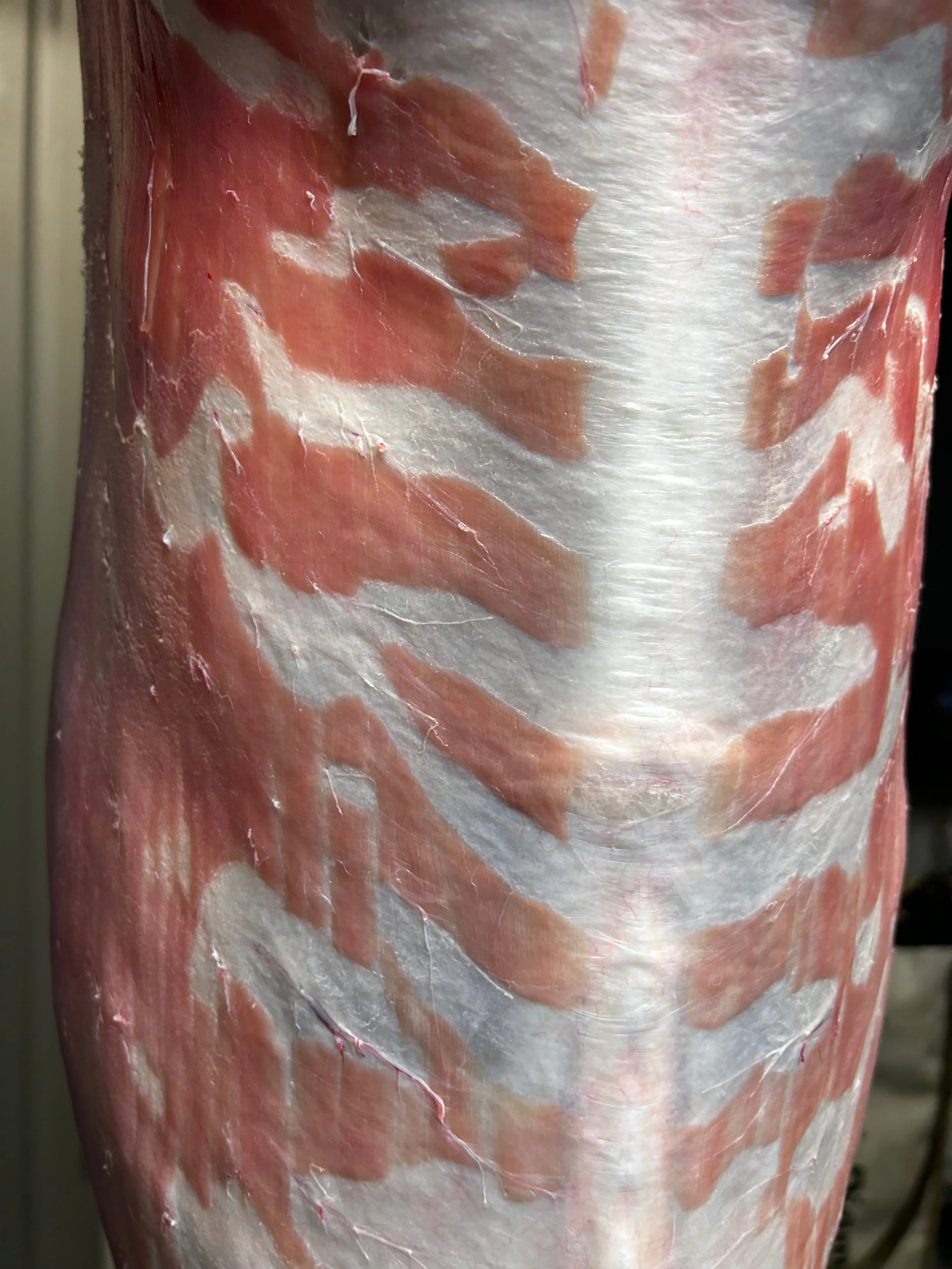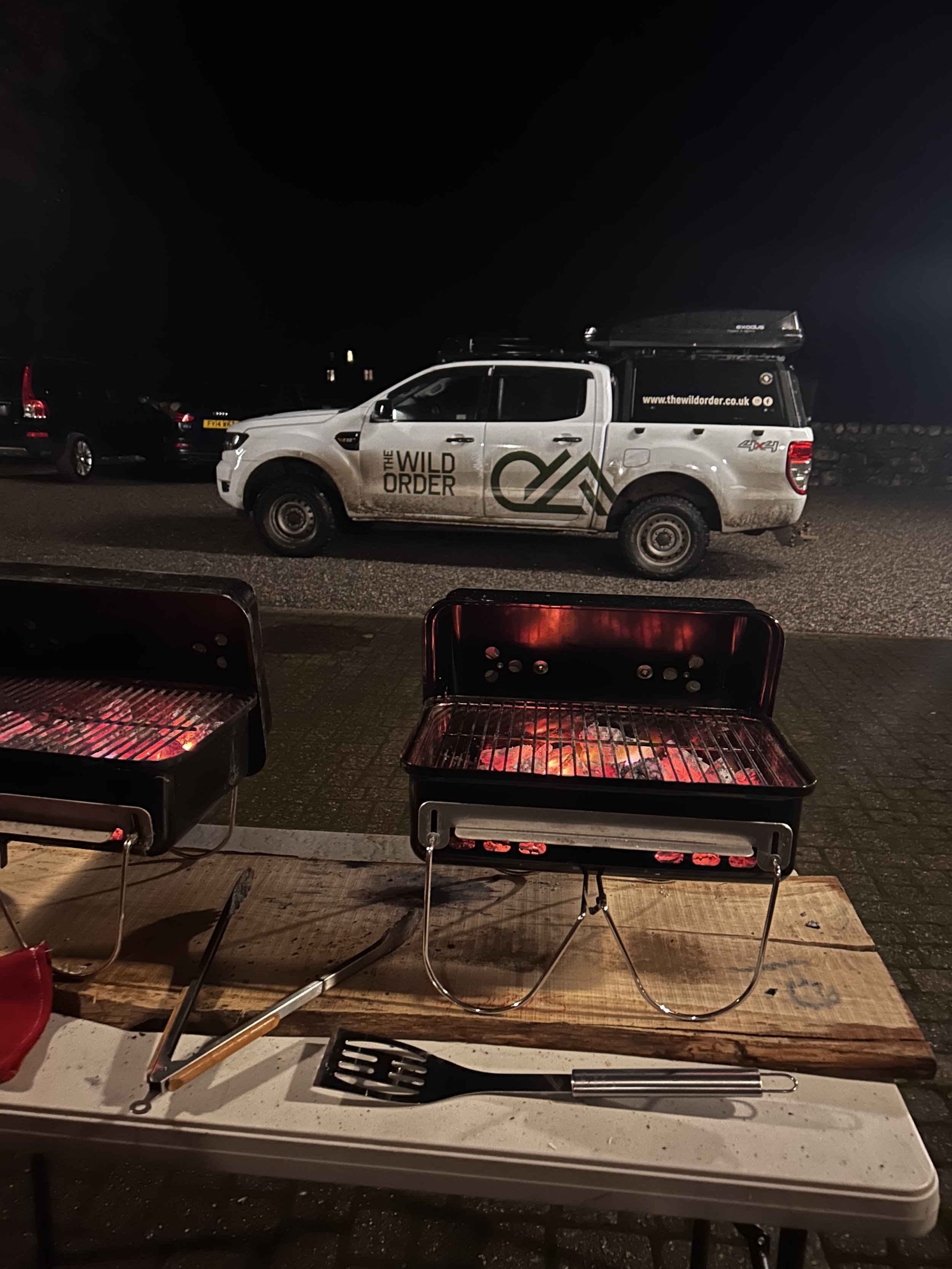The Wild Side of Food
I came to love wild meat through a desire to gain a greater connection to my food.
Looking back to 20-year-old me I’m embarrassed to admit I was incredibly ignorant about meat in all its forms I wouldn’t have been able to tell you the difference between a Sirloin and a ribeye steak let alone knowing how to hunt, process and cook venison. It’s been a long journey with a steep learning curve, it's a lifelong pursuit with a seemingly infinite amount to learn.
Fallow back straps cooked over fire
My first foray into cooking Wild Game
What I remember is not the flavour of the meat, the tenderness or even what cut I cooked, but the overwhelming feeling of being deeply engaged in the process. I must have eaten hundreds of venison meals since then and still, the overriding emotion I have while processing and cooking this undervalued meat is my connection to the food chain. The emotions are varied, from gratitude to the animal and for the opportunities I’ve had that led me to this lifestyle, I can never ignore the smugness I feel too though.
In today's U.K. the number of individuals fostering this intimate connection with their food remains low, yet for me, this relationship holds profound value and is arguably among the most cherished aspects of my life.
When I pick a packet of venison out of my freezer I not only know it is full of amino acids, thiamine riboflavin, niacin, iron, zinc and B vitamins, and Omega-3 Fatty Acids, but I also know it’s Free of antibiotics and hormones. The wild Deer in the U.K. have a great life too, Totally free-range, living how they should within the wildest areas our little island can offer them. This natural Lifestyle results in meat that's higher in certain nutrients and antioxidants which contributes to the overall nutritional richness and flavour.
Knowing most deer live a charmed life in comparison to their domesticated friends (cattle, sheep etc) adds moral and ethical points to their already glowing report.
Fallow buck tiger stripes
A hidden problem grumbles beneath the surface
Today people are being encouraged to eat more Venison. This on the surface would appear fantastic but there is an issue many people are blissfully unaware of.
It's like with anything that the media and businesses get hold of, it becomes toxically monetised, and where it's monetised it can become abused. We must as an industry and society be aware of what’s going on and take responsibility to educate and procure our venison through sustainable and ethical sources.
Some of the big supermarkets including, Waitrose, M&S, Tesco and Sandsbury’s all sell farmed or park venison, while this is still a healthy meat it does nothing for the wild meat economy which benefits hunters, landowners and our deer population.
Like with many things, the responsibility is now with the consumer to become educated and not take the supermarket's word for it. Waitrose recently had this short peace in its in-store publication.
Who knows what went wrong here, Whether this is blatant deception, ignorance or lack of knowledge is hard to say. What’s clear though is the problem. Supermarkets jumping on the deer hysteria and portraying doing the right thing while only compounding the problem.
We all need to ask the question ‘Where is this food from?’ When buying any food these days, especially meat. A careful look at the label will usually reveal all.
Guests larding deer after a successful day on the hill.
The Value is not just in the meat
There are many levels of value that one can attribute to Deer, that are hardly heard in the press today.
Surprisingly, a common fact that is often left out of media reports on Deer, is that two of our six wild deer species are native to the U.K. The Roe Deer and the Red Deer. Both have been present on our landscape in varying numbers since before the Mesolithic period and were highly valued by our ancestors for there skins, meat, bone and sinew. These deer along with other animal species helped to shape our landscape of today. Deer and particularly our native species hold significant cultural and historical importance in the UK. We should value them as highly as our ancestors once did.
But that's not all, deer also contribute to our:
Rural economy: Deer management supports rural economies through activities like hunting, which generates revenue from, tourism, and the sale of venison. Additionally, the presence of deer can attract wildlife enthusiasts and photographers, boosting local tourism
Biodiversity Support: Deer contributes to biodiversity by being a part of the food chain. They provide a food source for our remaining predators and carrion feeders, such as foxes and large birds of prey, contributing to the overall health of the ecosystem.
Ecological Balance: Deer species when in balance, play a crucial role in the ecosystem by controlling vegetation growth. Their grazing behaviour helps shape the landscape, maintaining diverse habitats for other species such as birds, insects, and smaller mammals.
Getting ready to cook heart kebabs
The crux, as I see it
In a world where many species are struggling to adjust to our changing world, shouldn’t we be celebrating our wild animals that are thriving, not persecuting them, after all, it's clear they add significant value in many ways to our rural areas.
What’s needed is a measured and educated response to areas that are struggling with high deer populations. What’s not needed is the knee-jerk ‘deer are bad for the environment’ reaction which is the overriding message pushed out today. This issue is far more nuanced than we are led to believe.
In the interest of fairness It's important to mention that where deer populations are too high, they can cause significant damage, to crops, woodlands and peatlands, either by feeding heavily in sensitive areas, fraying young trees with antlers or trampling peat. However, with efforts from deer managers, this can largely be mitigated.
What we should all be calling for is more data on deer numbers, greater transparency between landowners and hunters and greater more joined-up information from our government agencies who are currently doing a shocking job of giving us measured and accurate information. Maybe that is a subject to be tackled in another blog someday…
If you remember one thing from this blog today, make sure it’s ‘know where you’re venison comes from, buy local and buy wild.








